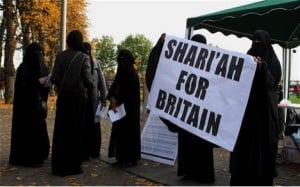Recently, NPR analyst Juan Williams was quoted as saying, “…when I get on the plane, I got to tell you, if I see people who are in Muslim garb and I think, you know, they are identifying themselves first and foremost as Muslims, I get worried. I get nervous.” on The O’Reilly Factor.
As a response, “Pictures of Muslims Wearing Things” was created, shattering the stereotype of what “Muslim garb” looks like. It is a site dedicated to showing the diversity of Muslim “garb,” where users submit pictures of normal Muslims dressed in different ways (including our very own Sana Saeed).
I really loved this website. It is the type of refreshing, smart and thought-provoking response that I think can best fight the irrationality of Islamophobia. Williams’ comment touches on a struggle that I think many Muslims in the West face, how our fashion choices connect to our value of religion. Muslims Wearing Things features individuals wearing hijab, basketball jerseys, more urban styles or risqué high fashion, the common denominator being a pride in being a Muslim. While the purpose of the site is to challenge and counter an outsider stereotype of what a Muslim may look like, it made me think about the necessity of a dialogue challenging how we view dress as an Islamic community.
When I initially saw Muslims Wearing Things, I was full of excitement because of the different celebrities that I did not even realize were Muslim. I remembered searching for Muslim role models in the media as a teenager, but I rarely saw a visible example of a Muslim in the West. Muslims Wearing Things shatters the link between pride in identifying as a Muslim and dressing in a way that is typically viewed as Muslim. Rather than privileging a certain style of dress, Muslims Wearing Things challenges visitors to see Muslims as individuals. For a large portion of my own life, I always felt that there was a clash between dressing within my own style and dressing as a Muslim. Thus, my surprise as I clicked through the pictures made me reflect on how I correlate a particular style of dress with a specific level of devoutness. Discussions about the niqab or hijab involve an outsider’s view of Muslims, and what is dangerous about those discussions is that it can limit the way we may believe a Muslim should look, even amongst ourselves.
As much as it irritates me, the way that we dress as Muslims plays a pretty big role in a faith-based identity crisis. In the face of increasing Islamophobia, it becomes easy to view wearing more “traditionally” Islamic clothing as some type of political statement, as Williams demonstrated with his comment. After 9/11, I remember the struggles that many of us had with hijab. To feel unsafe in hijab started to feel synonymous with feeling unsafe as a Muslim. Thus, I felt as though my pride in my faith could only correlate with how Muslim I looked.
In discussing Islamic style of dress, it becomes easy to focus on Islamophobic comments, but I think there is a lot to be contested locally. As Muslims, we tend to also have a specific image of what a Muslim may look like. I remembered feeling to “Americanized” in my style of dress, and what is great about Muslims Wearing Things is that it values the cultural hybridity that many of us bring to the table. If we are to expect others, like Juan Williams or Bill O’Reilly, to be more open about what a Muslim may look like, we need to be open about what a Muslim may look like ourselves. While being proud of being Muslim is a healthy notion, this does not have to look a specific way. That pride can take many forms, and Muslims Wearing Things celebrates that.













